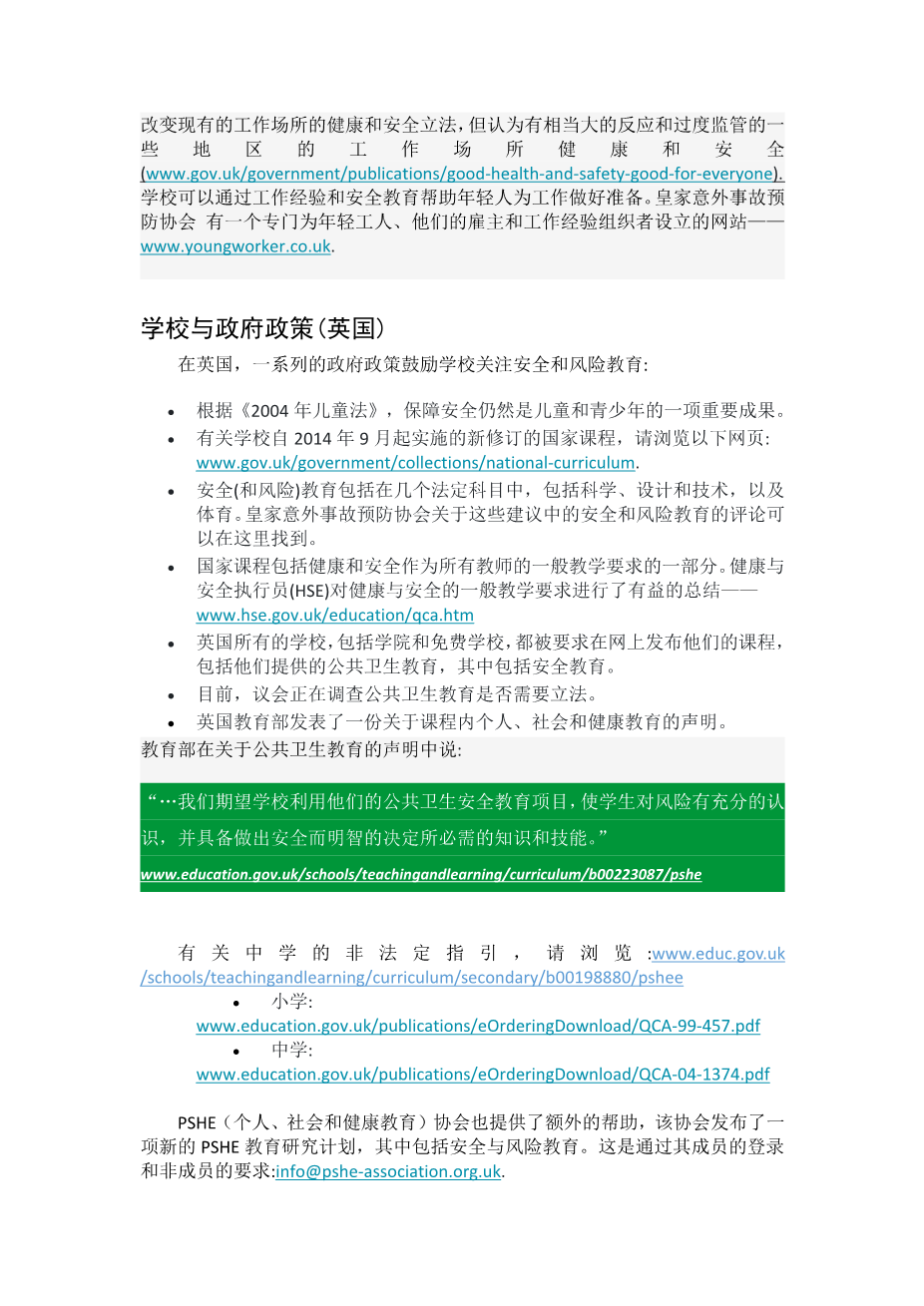Why educate children and young people about safety and risk?
https://www.rospa.com/School-College-Safety/Teaching-Safety/Evaluating/Road-Safety.aspx
The United Kingdom is one of the safest countries in the developed world in which to grow up. It is also one the unhappiest places according to UNICEF. One of the ways children develop socially, emotionally and cognitively is through play. Understandably, adults often restrict childrens play to safe, indoor spaces where they are very unlikely to be injured. In the UK this trend has happened only in the last 20 or 30 years. Before that, children played outdoors, often unsupervised for many hours, especially in the summer months. If children are to be allowed the freedom to play outdoors again, and gain all the social, emotional and physical benefits this brings, then they need to learn how to take risks and keep themselves safe.
In this article we explore the importance of both safety and risk education in our schools and provide links to key documents to support schools to develop policy and practice.
Why safety education?
Safety education is the teaching of specific knowledge, skills and understanding that children need in order to stay safe in a given situation. Generally, schools themselves are safe places for children of all ages, so the focus of safety and risk education is to prepare children and young people for the world outside of school, now and in the future.
Accident statistics are also often quoted as an important justification for safety education in schools. In the UK accidents are a leading cause of death and serious injury.
In England and Wales in 2012, 139 children under the age of 15 died as a result of accidents. In 2012/13 the rate of emergency admission to hospital for young people in England was 104/10,000 under 15 year olds and 131/10,000 15-24 year olds 1. While most accidents in childhood are not severe many of those injuries can lead to a lifetime of disability. For further information, see the RoSPA Big Book of Accident Prevention.
Roads are an especially hazardous environment for children and young people of school age: 21/100,000 children under the age of 15 were killed or seriously injured on Englands roads (2010-12). In Britain overall, 4,626 children and young people of school aged (4-19) were killed or seriously injured in road accidents in 2012.
Workplaces and young people
Although generally the UK has a good record in injury prevention, fatal/serious accidents to young people in the workplace are also a concern. As educators we need to be aware that young people often lack the experience to recognise hazards in unfamiliar settings and may lack the confidence to ask for help or advice if they feel unsafe.
A report by Lord Young - Common Sense, Common Safety - in 2010 has resulted in changes to the inspection regime for workplaces, eliminating pro-active inspections. The Louml;fstedt review (2011) states that there is no need to change radically existing health and safety legislation in the workplace, but argues that there is considerable over reaction to and over-regulation of some areas of workplace health and safety (www.gov.uk/government/publications/good-health-and-safety-good-for-everyone). Schools can help prepare young people for the workplace through work experience and safety education. RoSPA has a dedicated website for young workers, their employers and work experience organisers - www.youngworker.co.uk.
Schools and Government Policy (England)
In England, a range of government policies encourage schools to focus on safety and risk education:
- Keeping safe continues to be an important outcome for children and young people under the Children Act 2004.
- Information about the revised national curriculum implemented in schools from September 2014 can be found at: www.gov.uk/government/collections/national-curriculum.
- Safety (and risk) education are included in several statutory subjects including science, design and technology, and physical education. RoSPAs comments on safety and risk education in these proposals can be found here.
- The national curriculum includes health and safety as part of the general teaching requirement for all teachers. The Health and Safety Executive (HSE) has a useful summary of the general teaching requirement for health and safety - www.hse.gov.uk/education/qca.htm
- All schools in England, including academies and free schools are required to publish their curriculum online, including their provision for PSHE education, which includes safety education.
- There is currently a Parliamentary Inquiry into the need for PSHE education to be statutory.
- The Department for Education in England has published a statement about PSHE education within the curriculum:
In its statement on PSHE education, the DfE says:
'... we expect schools to use their PSHE education programme to equip pupils with a soun
剩余内容已隐藏,支付完成后下载完整资料
英语译文共 4 页,剩余内容已隐藏,支付完成后下载完整资料
资料编号:[245749],资料为PDF文档或Word文档,PDF文档可免费转换为Word
以上是毕业论文外文翻译,课题毕业论文、任务书、文献综述、开题报告、程序设计、图纸设计等资料可联系客服协助查找。




